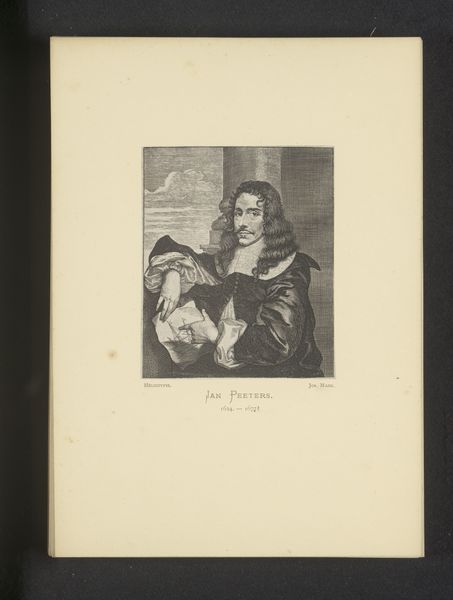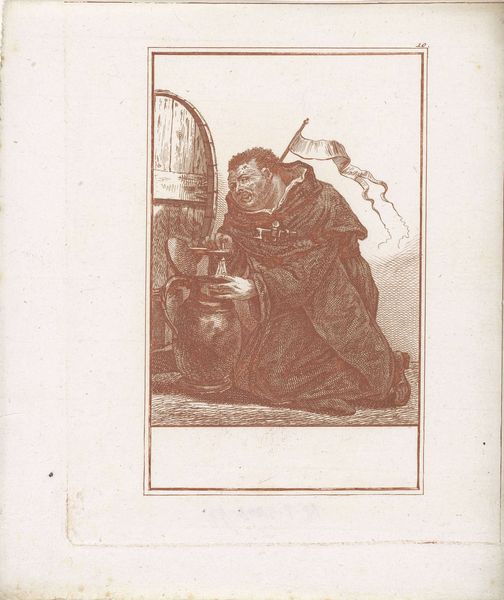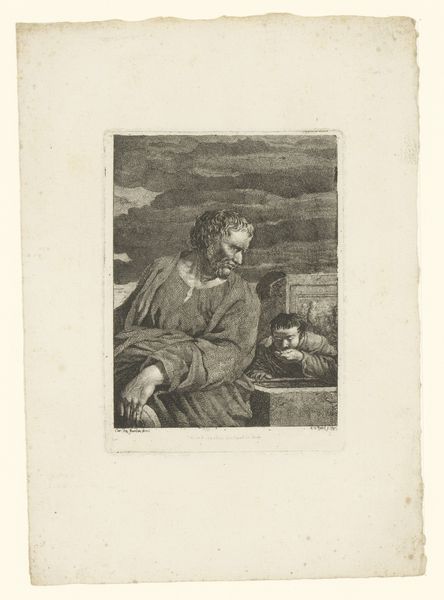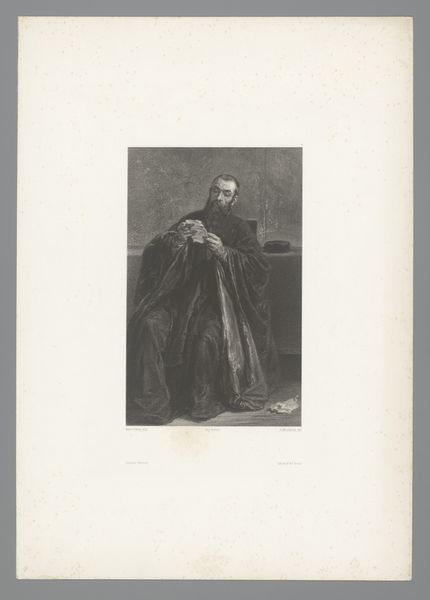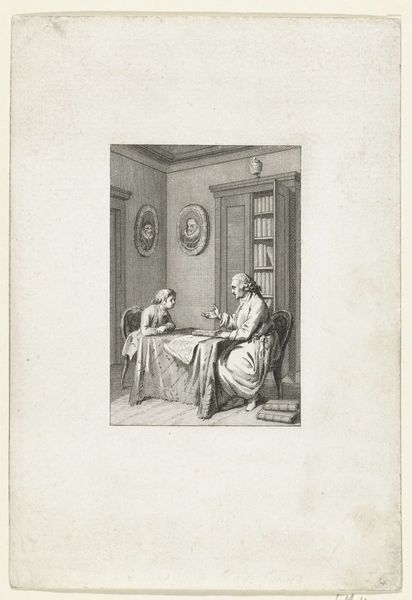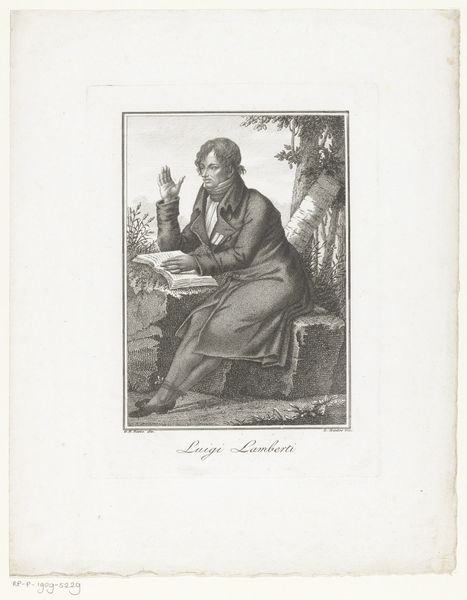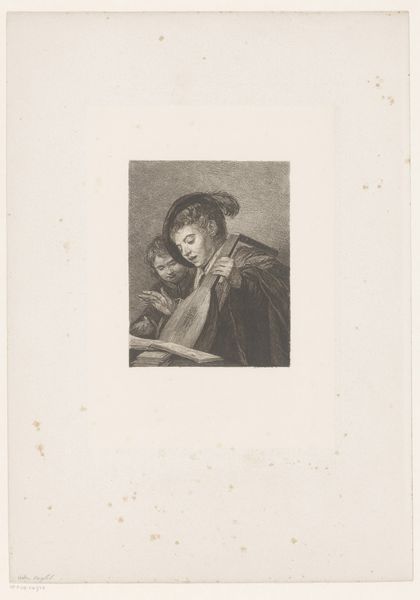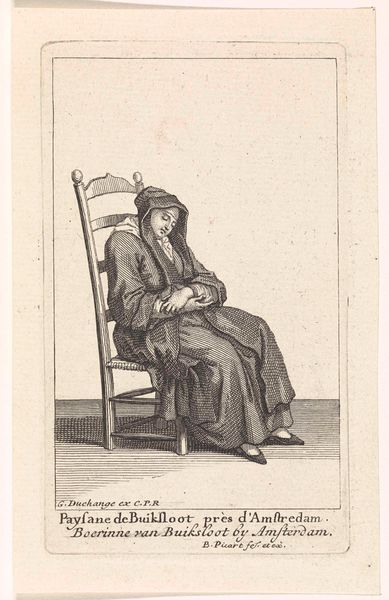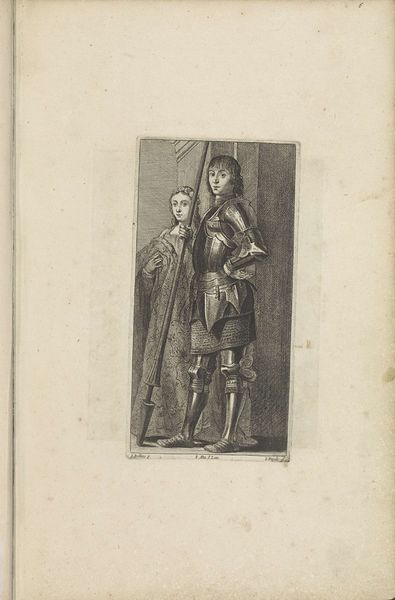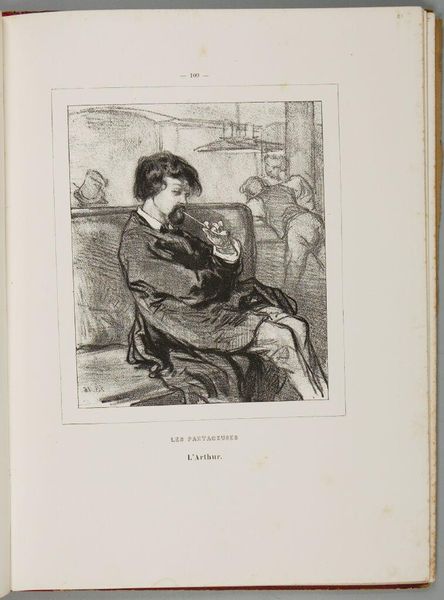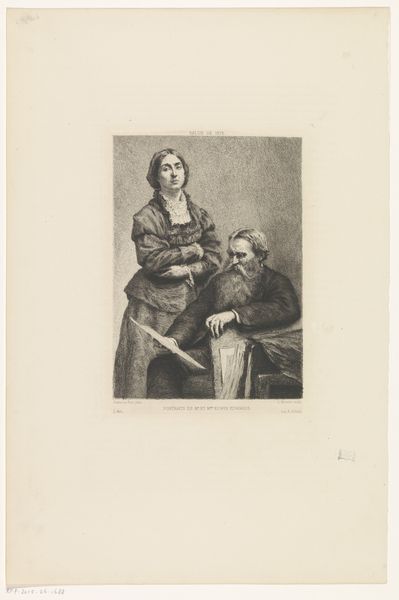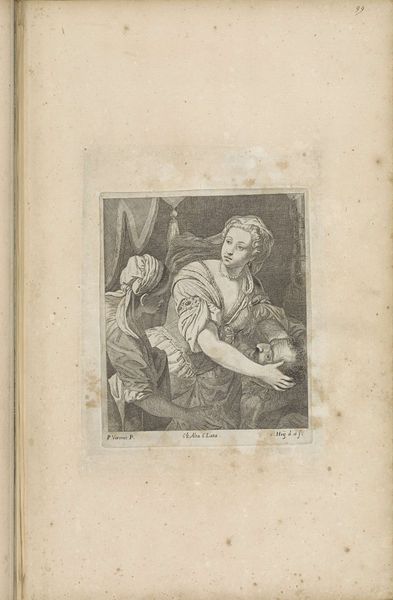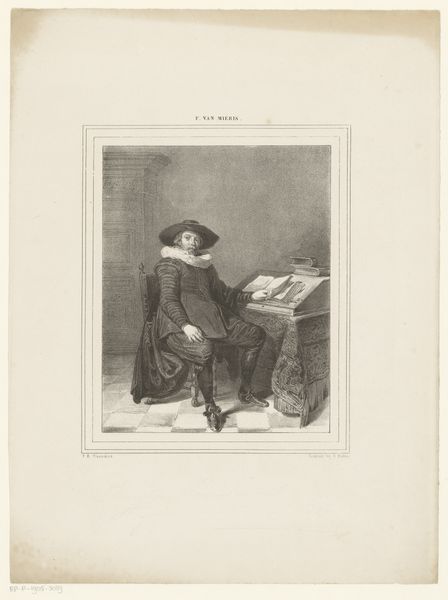
Portret van een man met een gouden klauw, mogelijk Leonino Brembate 1660
0:00
0:00
print, engraving
#
portrait
#
baroque
# print
#
old engraving style
#
figuration
#
engraving
Dimensions: height 194 mm, width 145 mm
Copyright: Rijks Museum: Open Domain
Lucas Vorsterman the Younger made this print of a man, possibly Leonino Brembate, in the Netherlands during the mid-17th century. Consider the context: the Dutch Golden Age was a period of immense wealth and cultural achievement. What does it mean to produce images of men with golden claws at this time? Perhaps it’s an allusion to wealth acquired through overseas trade or perhaps the golden claw symbolizes power, status, and membership to merchant guilds. The man's fur-lined coat and the general opulence suggest a certain level of social standing. This would have been a period of immense wealth but also rising social inequality. Through attention to details like costume and setting, combined with research into the economic structures of 17th century Netherlands we can decode the social and cultural values embedded in this portrait. Such historical analysis allows us to better understand the social and institutional conditions that shaped artistic production.
Comments
No comments
Be the first to comment and join the conversation on the ultimate creative platform.
